Raisen, the lesser known district of central Indian state Madhya Pradesh bordering capital city Bhopal not only features some of the amazing tourist destinations like the incomplete Bhojeshwar temple and the majestic Raisen Fort, it also boasts at least two of the three UNESCO World Heritage Sites of the state namely the Sanchi Stupa and the Bhimbetka Rock Shelters. The district is a treasure trove not only for the history enthusiasts, but also equally popular with the regular visitors and tourists.
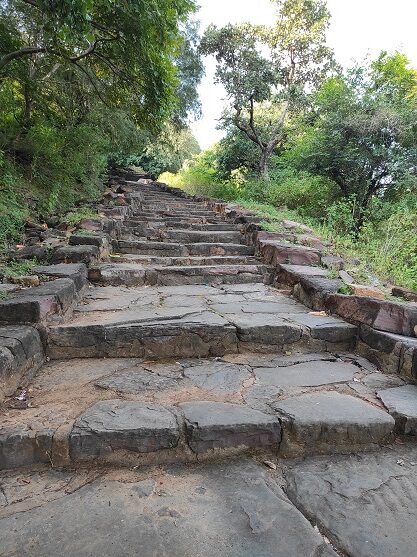
While Bhimbetka Rock Shelters is 48 kilometers from Bhopal, the iconic Bhojeshwar temple is just 28 kilometers away from the city and falls in the same route along NH-46. The great Sanchi Stupa is not far away. It is only 46 kilometers from the state capital on the way to Vidisha. All these places along with Udayagiri caves and Vidisha make for an exciting trip with Bhopal as your base. This post discusses all you need to know about Sanchi Stupa, one of the most revered Buddhist sites in India.
Read more on MP tour: A Walking Tour of Bhimbetka Rock Shelters and Prehistoric Cave Paintings
Post Contents
Reaching Sanchi Stupa
To visit Sanchi Stupa, you have to reach Bhopal first. To reach Bhopal either you take a flight or a train. The Raja Bhoja International Airport in has good connectivity of flights from all major cities of India. Bhopal Junction is also a major railway station and is directly connected to all major small and big cities in the country.
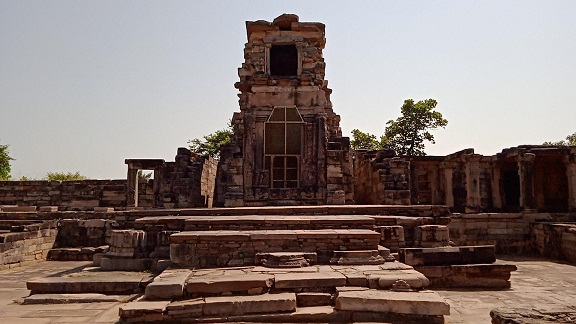
Once you have reached Bhopal, you are left with quite a few options to travel to Sanchi. You can take a cab which can cost you around Rs 2,000 for a day trip. You can also take the train, but most of the trains don’t stop at Sanchi, but they do stop at Vidisha which is only 10 kms away. The last option is taking a bus to Sanchi. Since Sanchi is quite close to Bhopal, it is not a bad idea to take the bus. During my visit to Sanchi last month I took the bus and it came handy.
What is important is that there are regular bus services to Sanchi and you can board one from the Nadara bus terminal near Bhopal Junction. It takes about 1 hours 30 minutes to reach and the bus drops you at a point in Sanchi from where you just have to walk some 700 meters to reach the hillock that houses the Sanchi Stupa complex. The entry fee to visit Sanchi Stupa is Rs 40 for Indian nationals and Rs 600 for foreigners. Children under 15 years are exempted from entry fees.
You can also club your Sanchi visit with Udayagiri caves which are about 8 kms from Sanchi. For this you need to take an auto which could cost you about Rs 300.
More posts on MP tour: Bhojeshwar temple: The unfinished masterpiece of Bhopal
A brief introduction of Sanchi Stupa
Sanchi, a quaint Buddhist complex, is famed for housing one of India’s most important historical landmarks, the Sanchi Stupa. It lies around 46 kilometres northeast of Madhya Pradesh’s capital city of Bhopal. The Sanchi Stupa, a UNESCO World Heritage site since 1989, is widely regarded as the best preserved ancient stupa in Central India.
A stupa is a Buddhist structure that is often a large semi-hemispherical dome with a parasol or chatra on top. Its purpose is to house and honour Gautama Buddha’s remains. As it was introduced in many cultures, the basic format of a stupa underwent many changes, and therefore a stupa is known as a dagoba in Sri Lanka, zedi in Myanmar, and pagoda in China, depending on distinct shapes and designs.
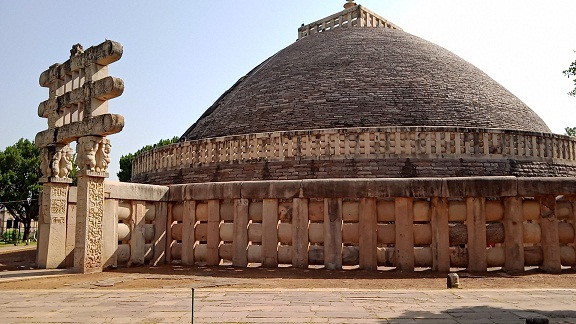
Emperor Ashoka commissioned and built Sanchi Stupa in the third century BC, with his wife Queen Devi, the daughter of a trader in Vidisha, a city near Sanchi, supervising the construction. The stupa, which was originally only a brick dome, witnessed modifications and additions under the control of many kingdoms from different periods
With the waning of Buddhism in India, the monuments of Sanchi fell into disrepair. Sanchi was rediscovered in 1818 by British General Mark Taylor. The restoration of the site began in 1912, under the guidance of Sir John Marshall.
Must read: Bodh Gaya travel: A self-enlighening journey into the land of Buddha
The Sanchi Stupas
The main stupa
Also known as The Great Stupa and Stupa-1, the surprisingly solid hemispherical dome, is adorned by a triple “parasol” set within a square railing or harmika. A raised terrace, surrounded by a fence, is located one-third of the way up from the monument’s base and is intended for ritual circumambulation. A second, stone-paved procession path at ground level is flanked by a stone balustrade. This path is approached via four intricately designed gateways from the four cardinal directions.
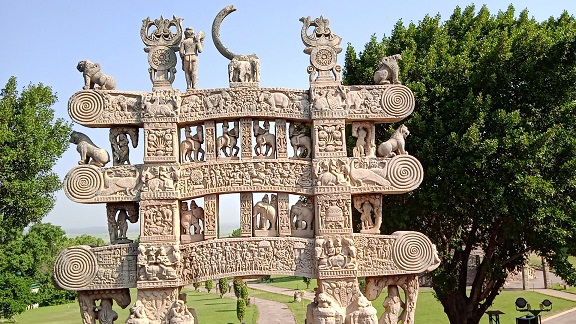
The stupa was vandalised at some point during the 2nd century BCE, which some have linked to the ascent of the Sunga ruler Pusyamitra Sunga. It’s likely that Pushyamitra demolished the ancient stupa and his son Agnimitra rebuilt it. The stupa was nearly doubled in size during the Sunga’s later period, thanks to the addition of stone slabs.
The stupa is 120 feet across and, excluding the railing and umbrella, is 54 feet high. The beautiful ornate gateways or toranas that adorn the Sanchi Stupa were erected during the reign of the Satavahanas in the 1st century BCE. Inscriptions have been found that have contributed to the dating of these gates.
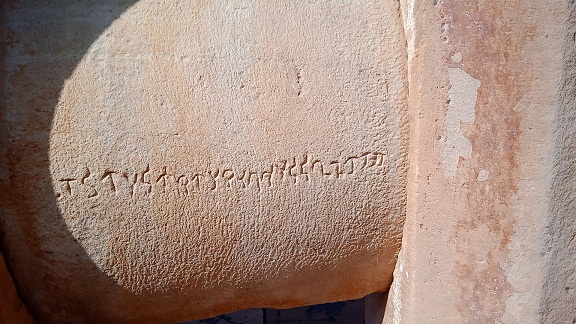
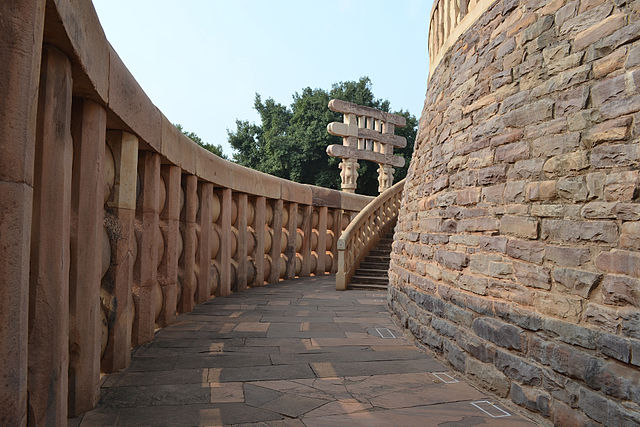
Despite being made of stone, they were carved and built in the style of wood, and the gateways were adorned with narrative sculptures. They exhibited events from the Buddha’s life interwoven with everyday events that would be familiar to spectators, making it simpler for them to understand the Buddhist doctrine as relevant to their lives.
Stupa No-2
Stupa No-2 is another outstanding demonstration of Buddhist architecture. You have to walk downhill to reach this stupa and on the way you can visit monastery no-51 and the great bowl. The stupa is perched on the side of a hill. Unlike the main stupa, you won’t find any gateways to this stupa. But it attracts tourists due to the stone balustrade that encircles it. The stupa’s wall is adorned with medallions
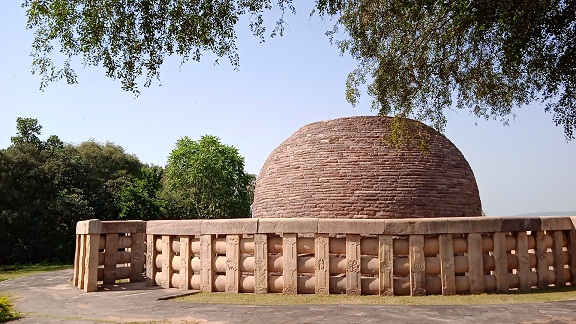
It is believed to have been built between the end of the 2nd century and the beginning of the 1st century BCE and is the oldest of the three Shunga Stupas. It is of particular interest because it has one of the earliest known extensive displays of decorative reliefs in India, pre-dates the reliefs at the Mahabodhi Temple in Bodh Gaya or the reliefs at Bharhut.
The dome’s diameter is nearly 10 m. It has no Harmika and Chhatra and is cut flat on top. The excavation uncovered a relic chamber with four steatite caskets for ashes etched with the names of ten senior priests from the Ashoka period.
Reccomonded Read: Dancing Shiva of Chidambaram: Where science meets spirituality
Stupa No-3
Located north of the Main Stupa, Stupa -3 was built in the 2nd century BC during the reign of the Shungas, replete with a staircase and a balustrade. As the circumference of its pedestal is around 15m, its scale is nearly the same as Stupa 2 as a whole. It is similar in design to the Great Stupa, but smaller, with a single, rather finely carved gateway. However, the outside wall has been lost, and the only remaining cardinal point is the South Torana.
The hemispherical dome of Stupa 3 has a crown with special religious significance. It features a polished stone umbrella. The single torana doorway directed south is not Shunga, but was built later during the Satavahanas, perhaps around 50 BCE.
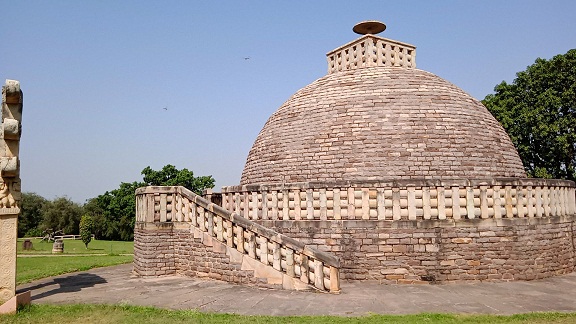
Two steatite caskets for ashes were found in this Stupa’s little relic chamber, with the names of the first two of Buddha’s 10 followers, Shariputra and Mahamogalana, engraved on them. Inside the caskets, there were bone fragments, crystals, amethyst, pearls, and other items. They were taken to London in the 19th century, but relics said to be the same ones were returned in 1952 and are presently housed in the Chetiyagiri Vihara.
Other Monuments at the Sanchi Stupa complex
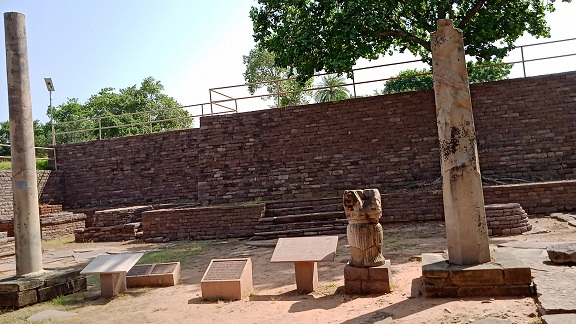
Ashoka Pillar
In the 3rd century, the Ashoka Pillar was erected. Unfortunately, the entire Ashoka Pillar is no longer standing. You can see only the pillar’s shaft at the gateway, and the crown is housed in the museum. The Ashoka Pillar’s crown is made out of four lions seated back to back. The depiction of these lions was later adopted as India’s National Emblem.
The Ashoka Pillar in Sanchi reflects the Greco Buddhist architectural style. The Ashoka Pillar’s most prominent feature is its outstanding dimensions. One can’t help but admire the Ashoka Pillar’s structural symmetry. It is strikingly similar to the one in Sarnath. The lions on this Ashoka Pillar in Sanchi are finely carved, however they do not support the wheel of law or the Dharmachakra. The Ashoka Pillar’s polish is superb and still shines today.
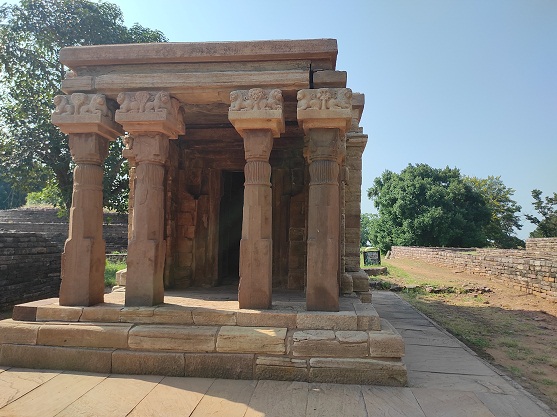
Gupta Period Temple
Towards the south-east of the main stupa or the great stupa you can see the the Gupta temple constructed in the 5th century AD , It is also known as Temple No.17. .The temple is proof of the Gupta period’s architectural brilliance. The temple was most likely used for Buddhist worship, according to most scholars. While temple construction in Buddhism was not prevalent, many of the features of this temple were later borrowed into Hindu temple architecture.
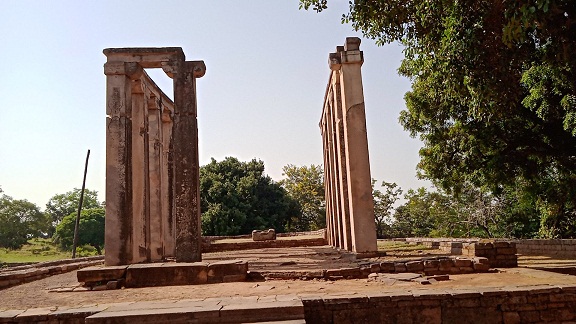
Temple No. 17 is an early Gupta period temple that exemplifies both simplicity and majesty. This exquisite temple has a basic flat-roofed sanctum with a four-pillared portico in front. The sanctum’s ceiling is slightly higher than the roof of the portico or hall. The temple’s interior and façade are not decorated , although the pillars are sculpted.
Near Temple No.17 lies Temple No.18, which may have been a stone-and-brick temple from the 2nd century CE. However what you see now is only a small portion of its original structure . Temple 18 is considerably larger than Temple 17, but much of it has been lost to the test of time, with the exception of the foundation and a few pillars. It is a Chaitya temple with a horseshoe-shaped layout and is thought to have housed a Stupa.
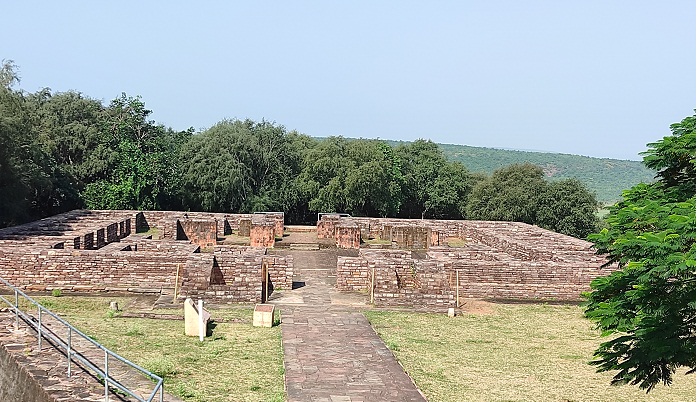
Monastery No-51 of Sanchi Stupa
As you walk downhill of the Western Gateway of the Main Stupa towards Stupa-2, you come across this monastery. This small and well-preserved monastery stretches 33.22 metres north to south and 32.69 metres east to west. The stone walls are significantly veneered with flat bricks, which is an intriguing feature.
The monastery is designed with an open courtyard in the centre, an enclosing verandah, and a number of cells behind. A large pylon flanks the main entrance in the eastern wall on either side. The verandah is higher than the brick-paved courtyard. This monastery has twenty-two cells, excluding the entrance-porches on the east and the rather spacious chamber on the west.
An old quarry, which was later converted into a tank, lies to the south-east of this monastery.
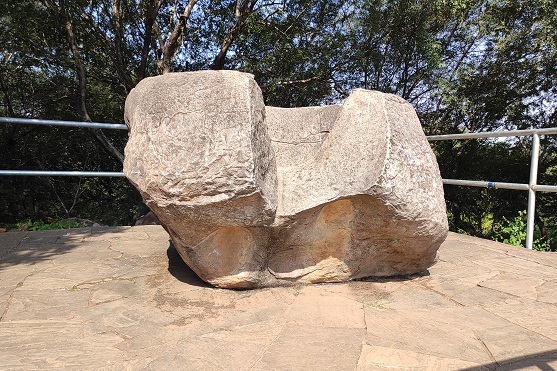
The Great Bowl of Sanchi Stupa
The Great Bowl is just behind the monastery no-51 and is halfway downhill to Stupa-2. It is exactly what its name suggests. The fact that it was carved out of a single rock adds to its allure. The Great Bowl was intended to hold food that would be handed to the Buddhist monks residing in the nearby monasteries. It is also known as Grand Gumbha and is one of the most popular attractions inside the Sanchi Stupa complex.

Jean-Pierre Dalbéra – Flickr
You might also Like: A Day Trip to Pichavaram Mangrove Forests
Sanchi Museum
When you walk up to the Sanchi Stupa from the National Highway, en route you come across the ASI museum at Sanchi also simply known as Sanchi. The entry fee to the museum is just Rs 5 for Indian nationals. When you are done with visiting the Sanchi Stupa complex, you need to visit this museum to complete your Sanchi tour.
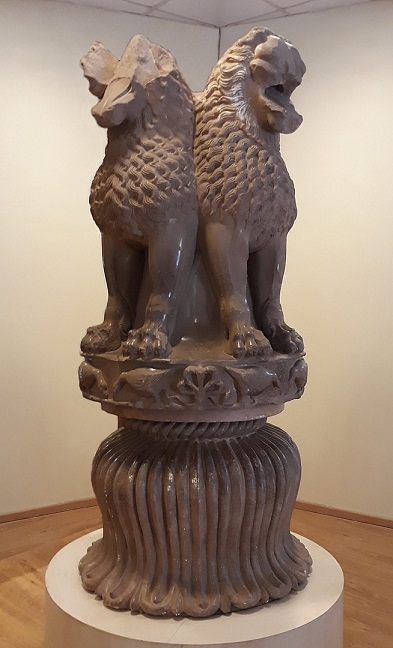
During excavations at Sanchi towards the end of the 19th century, a significant number of artefacts were unearthed. To house these relics, a small museum was developed on the hill near the Main Stupa in 1919 by Sir John Marshal, but it finally ran out of space. Eventually in 1966, the museum was shifted to a location at the foothill where it presently stands and also made open for the public.
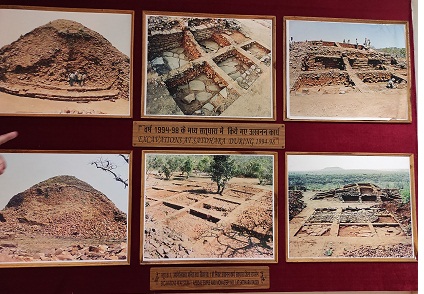
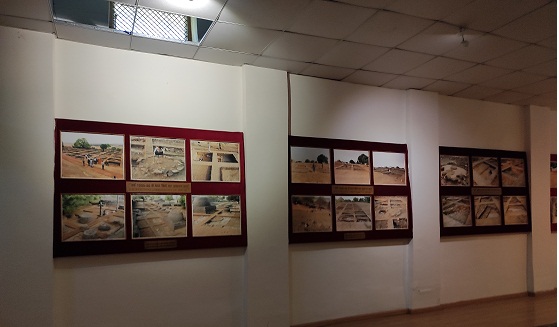
The top of the pillar installed by Emperor Ashoka close to the Main Stupa is the highlight of the archaeological museum. A bell-shaped unfolded lotus supports four lions seated back-to-back in this exquisite pillar capital. The lions exhibit power and authority, which is relevant given the inscription on the pillar beneath, in which Ashoka vowed to excommunicate any Buddhist who dared to create a schism.
The museum comprises a main hall and four more galleries. As you enter the museum, the first gallery that you see is the main hall. While most of the artefacts are from Sanchi, some are from nearby sites such as Vidisha, Murelkhurd, and Gyaraspur. The collection encompasses six cultural periods spanning more than 1000 years.
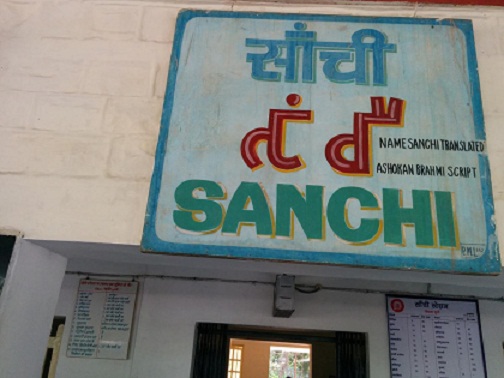
Some interesting facts about Sanchi Stupa
- Sanchi Stupa was commissioned by Emperor Ashoka and supervised by his queen Devi.
After the emperor accepted Buddhism, he built the first stupa at Sanchi followed by several more in the later years. - Sanchi Stupa remained deserted and undiscovered from the 14th century until the year 1818 when General Taylor rediscovered the site.
- Sir John Marshall established an archaeological museum here in 1919, which is today known as Sanchi Museum.
- The pillar of Sanchi Stupa has an Ashokan inscription called Schism Edict. It also has an inscription in the ornamental Sankha Lipi from the Gupta period.
- It’is one of the oldest stone structures in India.
- Sanchi Stupa has a large number of Brahmi inscriptions. Sanchi Railway station is the only one in India where the station’s name has been written using Brahmi script.
- The place possesses historical importance, however, Lord Buddha never visited this place.
- The famous Ashoka pillar, consisting of four lions is also found in Sanchi. These pillars are constructed in a Greco-Buddhist style.
- Sanchi Stupa was accorded UNESCO World Heritage Site status in the year 1989.

